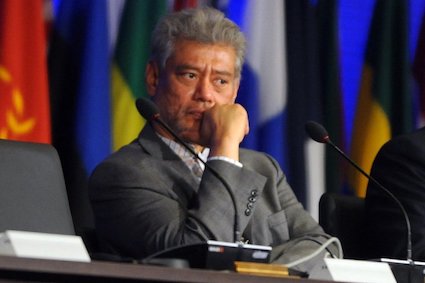Rethinking Malaysian poverty and inequality

Jomo K Sundaram and Hawati Abdul Hamid
A new Khazanah Research Institute (KRI) study challenges the Najib-era classification of Malaysian households by income into B40 (bottom 40%), M40 (middle 40%) and T20 (top 20%) groups. Analysing Department of Statistics’ (DoS) 2014 Malaysian household income and consumption data, the study doubts the utility of existing classifications.
Inter-household inequality is greatest for “production” incomes (from work and assets), followed by money (without imputed rents and other income in kind), gross (including transfers) and net (without transfers) incomes respectively.
The study reiterates several well-known suggestions for better interpreting household income data. These include considering net and disposable incomes, different living costs by location as well as household size and composition to better compare living standards.
Uneven economic development is reflected in inter- as well as intra-state inequalities. While cost of living differences in Sabah and Sarawak have long been acknowledged, differences in the peninsula have long been ignored in official analysis.
Diverse households
The B40 demarcation is an arbitrary threshold by the World Bank that does not consider many elements, including average income levels and other dimensions of well-being. The current practice does not consider different household sizes and composition, let alone “economies of scale” for those living together.
The KRI study adjusts household living standards to better compare differently constituted households, suggesting that every additional household member requires around 65% more income to maintain the same living standard as the first household member.
The study finds that a large share of B40 households rely on single-income recipients, who typically had less education, were employed in less-skilled work, more likely to be over 60 years of age, and had much less in savings.
Meanwhile, 80.2% of households identified as B40 by comparing gross incomes remain B40 after adjustment, but the remaining fifth could no longer be so identified, also implying that a fifth of the M40 should drop to B40 status.
Similarly, another tenth of M40 households would move up to T20 status, with only 78.4% of the previous T20 remaining, implying that over a fifth would move down to the M40 cohort.
Income, expenditure and well-being
Analysing consumption to complement income analysis provides more insights for assessing household welfare as consumption is widely associated with material well-being.
The study suggests that household consumption reflects a Maslovian “hierarchy of needs”, fulfilling basic “physical needs” before consuming other diverse goods and services. The bottom 20% of households are believed to only be able to fulfil these basic needs (food, housing and clothing) at best.
Analysis of consumption suggests that the bottom 20% were barely able to fulfil these basic needs with “equivalised” monthly incomes below RM1,196. Only the top 30%, with such incomes above RM3,015, exhibited the aspirational traits of more diverse middle-income class consumption.
Household consumption by the remaining middle 50%, including the fourth to the eighth deciles, with equivalised incomes of RM1,196 to RM3,015, appears remarkably similar. These households made various income- and credit-constrained choices accounting for much of the diversity in consumption.
This implies that a large share of so-called M40 households, from the fourth to the sixth deciles, lack the middle-class consumption characteristics in much of the extant literature.
The study argues that the hardship of the bottom 20% of households and the modest consumption of the middle 50% suggest that government policies matter to what might be termed the B70, that is, well beyond the B40.
Social policy implications
According to the World Bank and others, demarcating households is supposed to improve targeting for social policy provision and implementation. In practice, much of such targeting has not only been costly, but has also resulted in unfair exclusion and undeserving inclusion.
Over the last decade, social assistance programmes have ostensibly focused on the B40 despite considerable evidence of such errors of inclusion and exclusion. Hence, it is often argued that such targeting has been both “too narrow and too wide”.
Nobel laureate and Harvard professor Amartya Sen once observed that “benefits for the poor” tend to be “poor benefits”. Many others insist that benefits should be universal, as those limited to the poor are not only poor, but also politically difficult to sustain as they typically lack political influence.
Jomo Kwame Sundaram, a former economics professor, was United Nations assistant secretary-general for economic development. He is the recipient of the Wassily Leontief Prize for Advancing the Frontiers of Economic Thought, and a member of the Economic Action Council, and is also KRI senior adviser.
Hawati Abdul Hamid is with the Khazanah Research Institute and is lead author of Demarcating Households: An Integrated Income and Consumption Analysis, available at www.KRInstitute.org.

